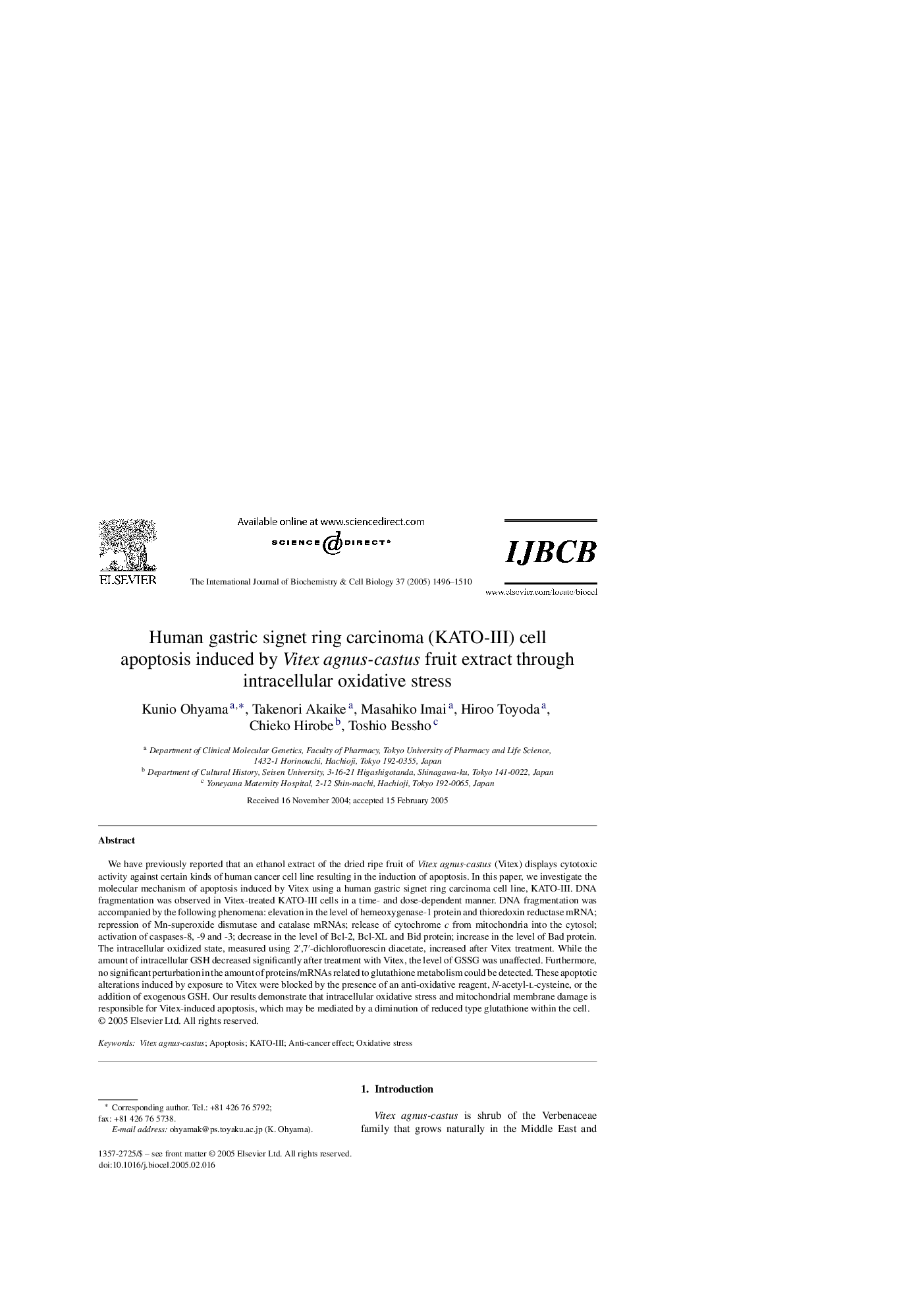| Article ID | Journal | Published Year | Pages | File Type |
|---|---|---|---|---|
| 9890000 | The International Journal of Biochemistry & Cell Biology | 2005 | 15 Pages |
Abstract
We have previously reported that an ethanol extract of the dried ripe fruit of Vitex agnus-castus (Vitex) displays cytotoxic activity against certain kinds of human cancer cell line resulting in the induction of apoptosis. In this paper, we investigate the molecular mechanism of apoptosis induced by Vitex using a human gastric signet ring carcinoma cell line, KATO-III. DNA fragmentation was observed in Vitex-treated KATO-III cells in a time- and dose-dependent manner. DNA fragmentation was accompanied by the following phenomena: elevation in the level of hemeoxygenase-1 protein and thioredoxin reductase mRNA; repression of Mn-superoxide dismutase and catalase mRNAs; release of cytochrome c from mitochondria into the cytosol; activation of caspases-8, -9 and -3; decrease in the level of Bcl-2, Bcl-XL and Bid protein; increase in the level of Bad protein. The intracellular oxidized state, measured using 2â²,7â²-dichlorofluorescin diacetate, increased after Vitex treatment. While the amount of intracellular GSH decreased significantly after treatment with Vitex, the level of GSSG was unaffected. Furthermore, no significant perturbation in the amount of proteins/mRNAs related to glutathione metabolism could be detected. These apoptotic alterations induced by exposure to Vitex were blocked by the presence of an anti-oxidative reagent, N-acetyl-l-cysteine, or the addition of exogenous GSH. Our results demonstrate that intracellular oxidative stress and mitochondrial membrane damage is responsible for Vitex-induced apoptosis, which may be mediated by a diminution of reduced type glutathione within the cell.
Related Topics
Life Sciences
Biochemistry, Genetics and Molecular Biology
Biochemistry
Authors
Kunio Ohyama, Takenori Akaike, Masahiko Imai, Hiroo Toyoda, Chieko Hirobe, Toshio Bessho,
